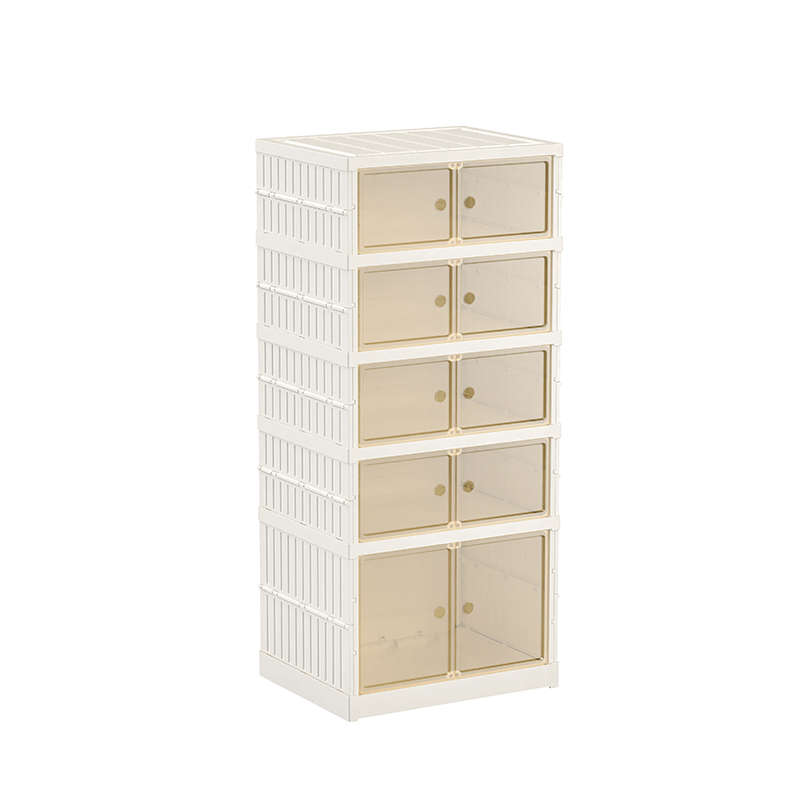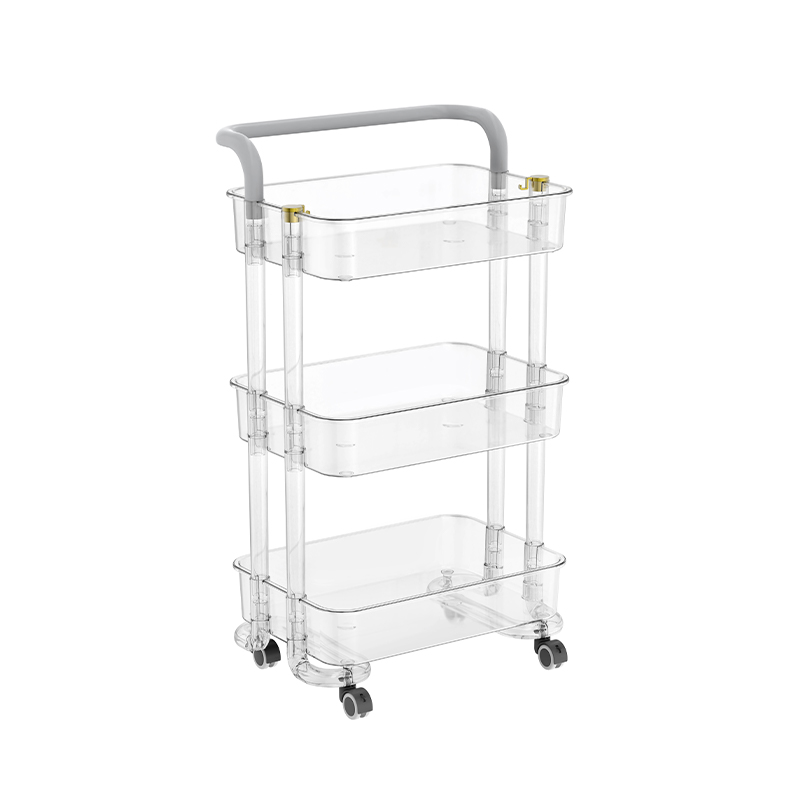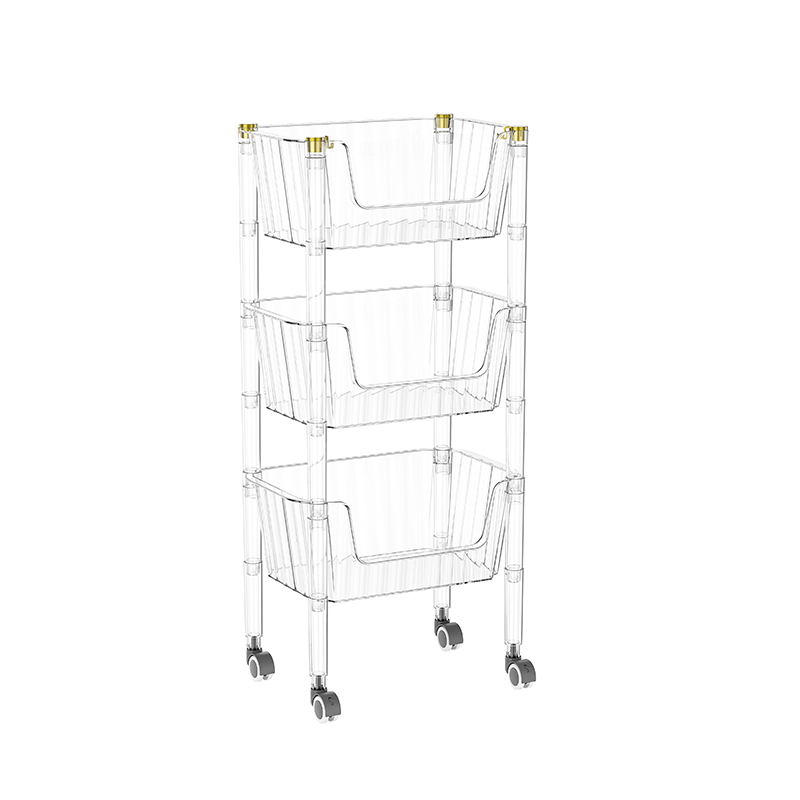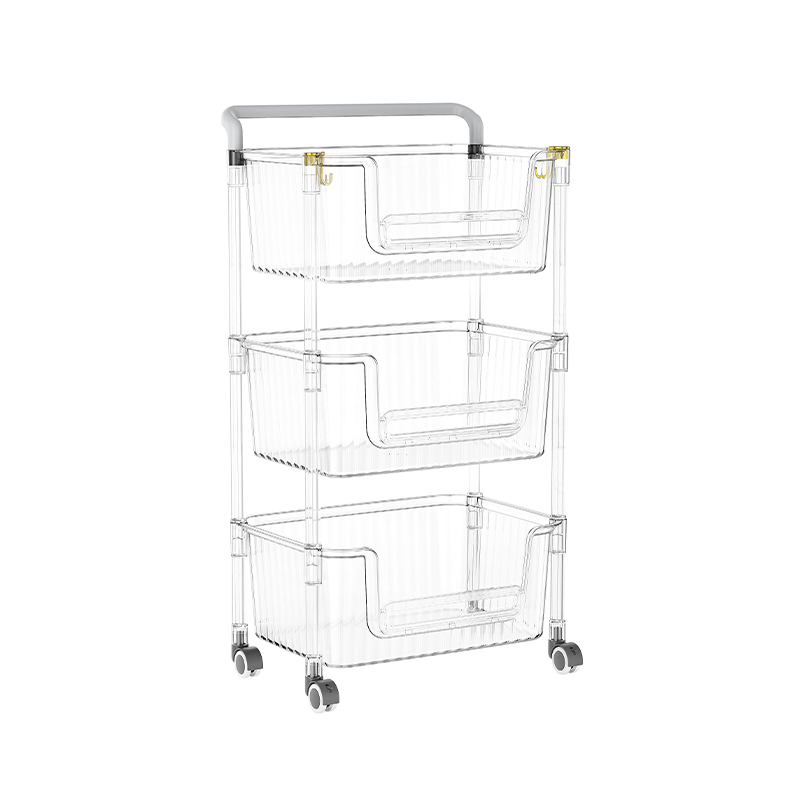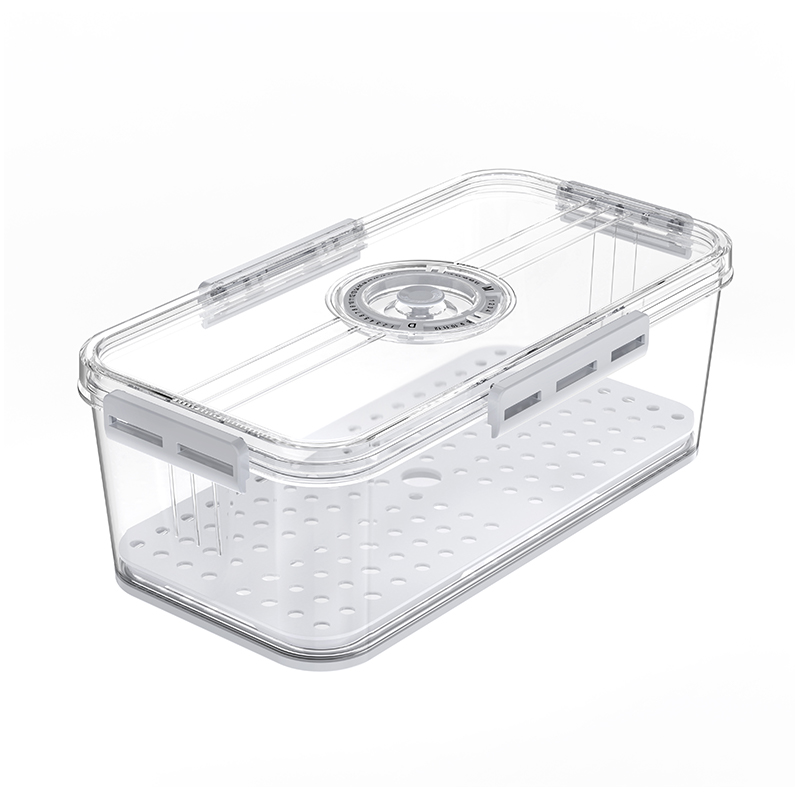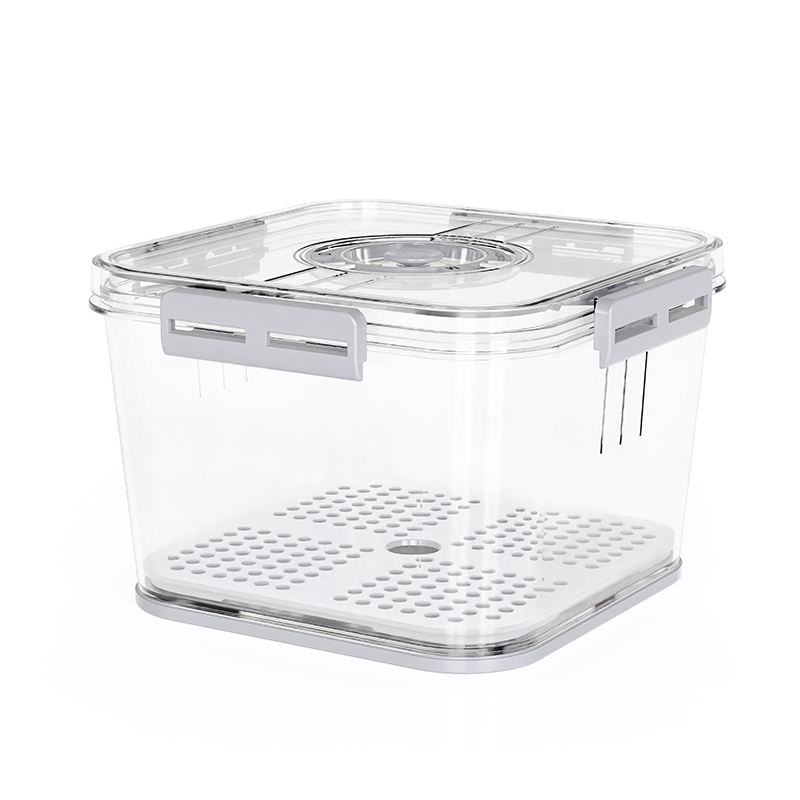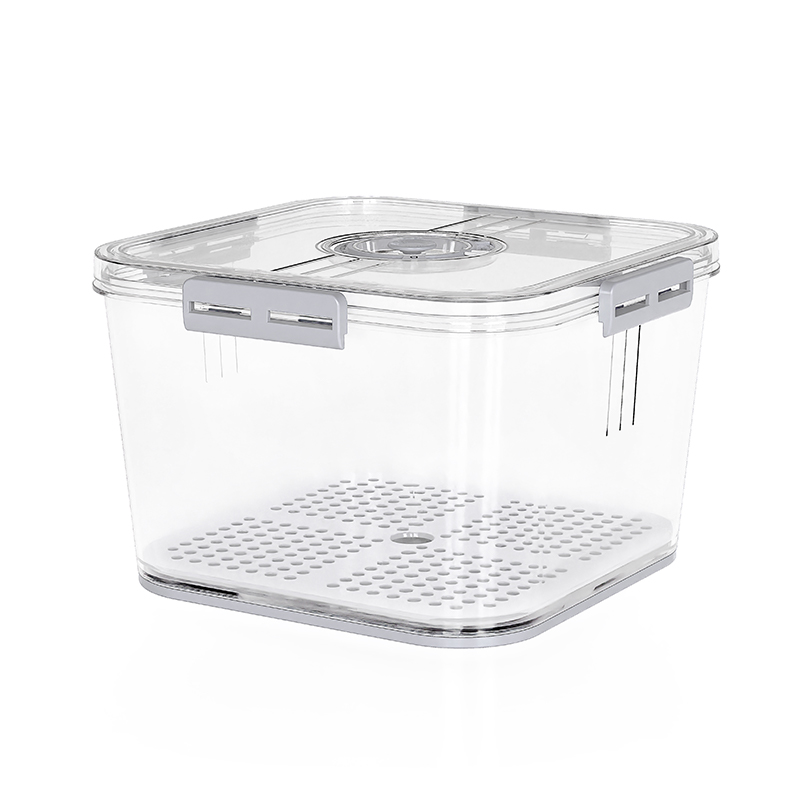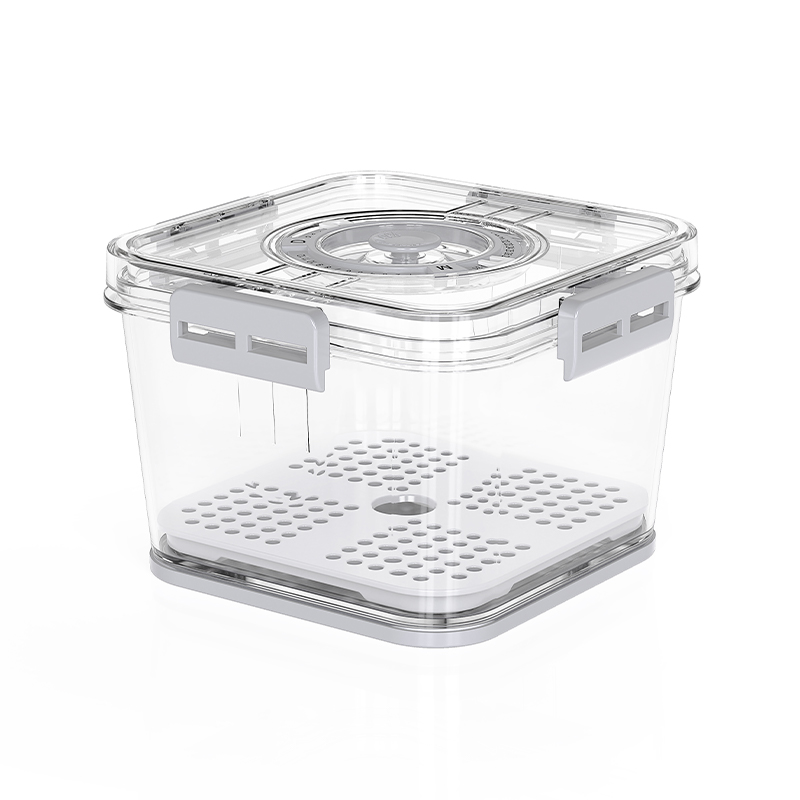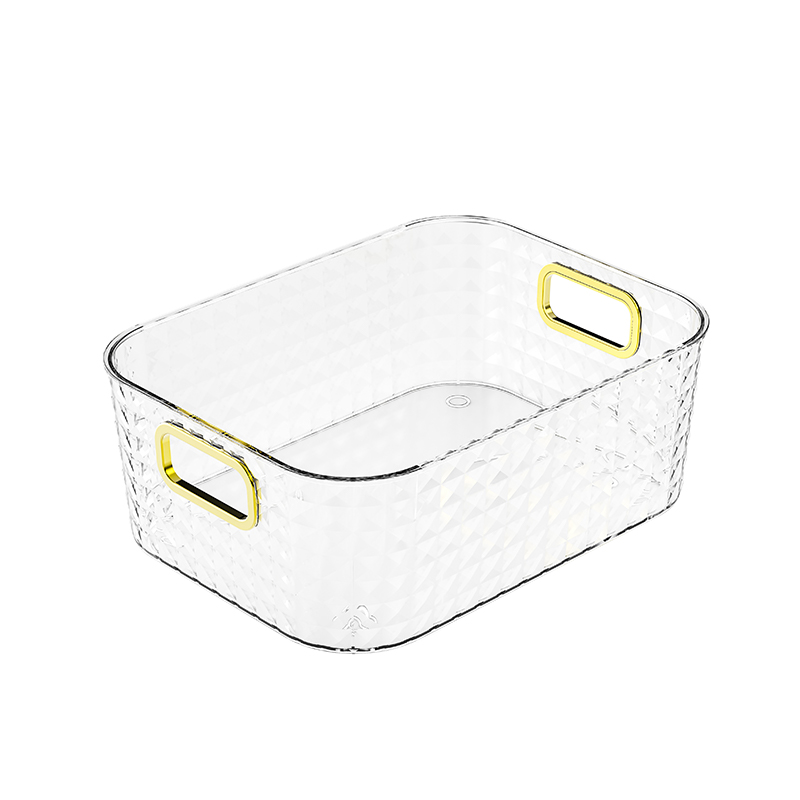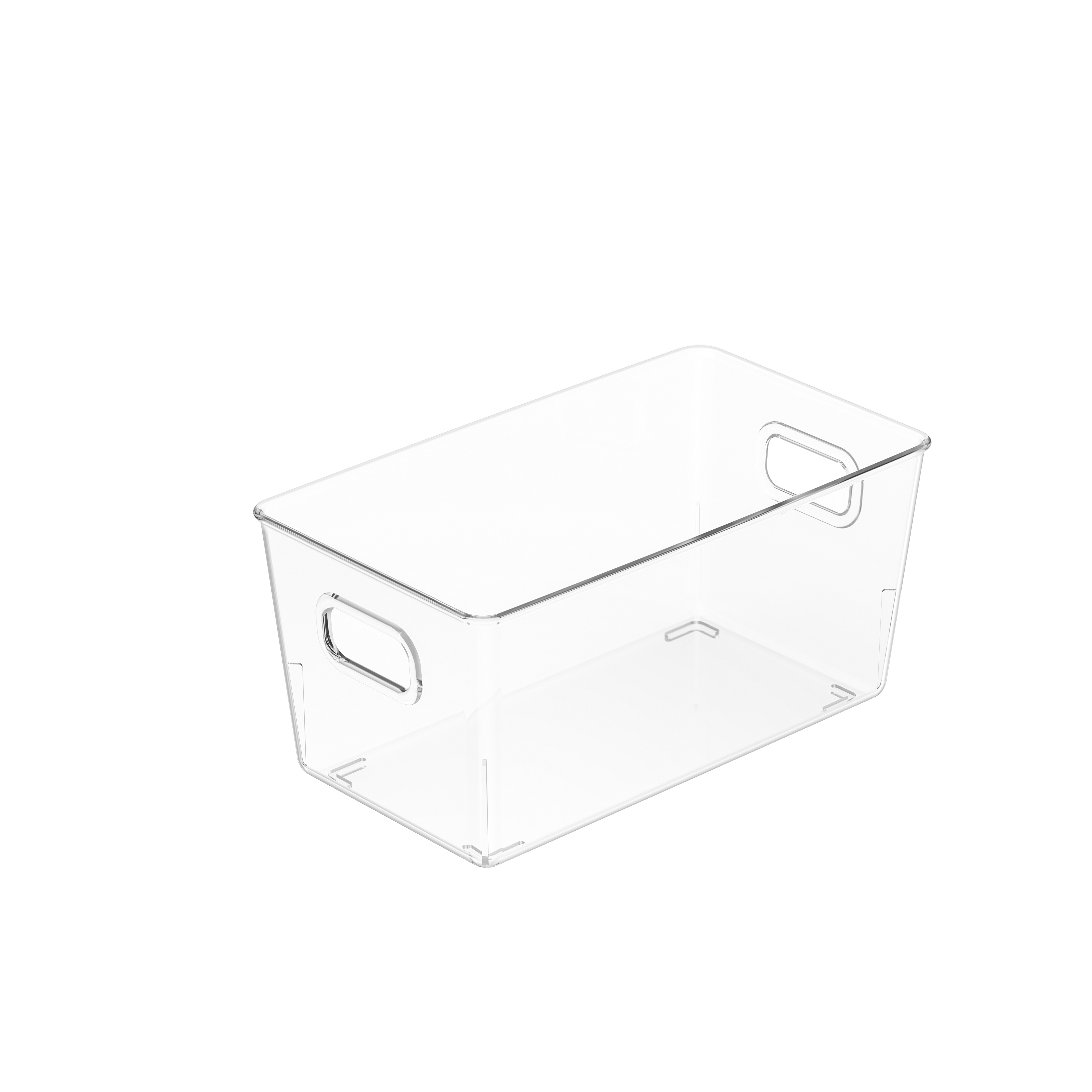Sealing principle and structural design of kitchen sealing fresh food boxes
The kitchen sealing fresh food boxes mainly rely on their sealing structure to block the entry of air and moisture, so as to achieve the purpose of extending the food preservation time. Its sealing structure is usually composed of a box body, a sealing ring and a lock. The sealing ring is mostly made of food-grade silicone material, which has a certain elasticity and flexibility, and can fit tightly between the interface of the box cover and the box body to form a closed sealed environment. The lock is used to firmly fix the lid on the box body to ensure that the sealing ring is evenly stressed, thereby preventing air and moisture from penetrating through the interface gap. The design of the sealed fresh-keeping box focuses on the precision of the contact surface between the sealing ring and the box cover to ensure that the two can effectively block the air and moisture in the external environment when combined. In addition, some products also use a multiple lock design to further enhance the sealing effect and reduce the risk of food oxidation and moisture loss.
Analysis of the effect of sealed fresh-keeping boxes to prevent air from entering
The air contains oxygen, dust and microorganisms, and air entering the fresh-keeping box will accelerate the deterioration of food. The kitchen sealing fresh food box can reduce the probability of air entering the box through the cooperation of the sealing ring and the lock, thereby effectively delaying the oxidation reaction and the growth of microorganisms. Some sealed boxes with optimized design can even achieve a lower internal air exchange rate, which helps to maintain the freshness of food. However, in actual use, the sealing effect is also affected by many factors, such as the aging of the sealing ring, the lid is not completely fastened, and whether there is slight damage to the joint surface of the box body and the lid, all of which may cause air to enter. In order to ensure the sealing performance, users need to use it correctly according to the product instructions and check regularly whether the sealing ring is intact. In general, the performance of sealed fresh-keeping boxes in preventing air from entering is better than that of ordinary plastic boxes, which can slow down the speed of food deterioration to a certain extent.
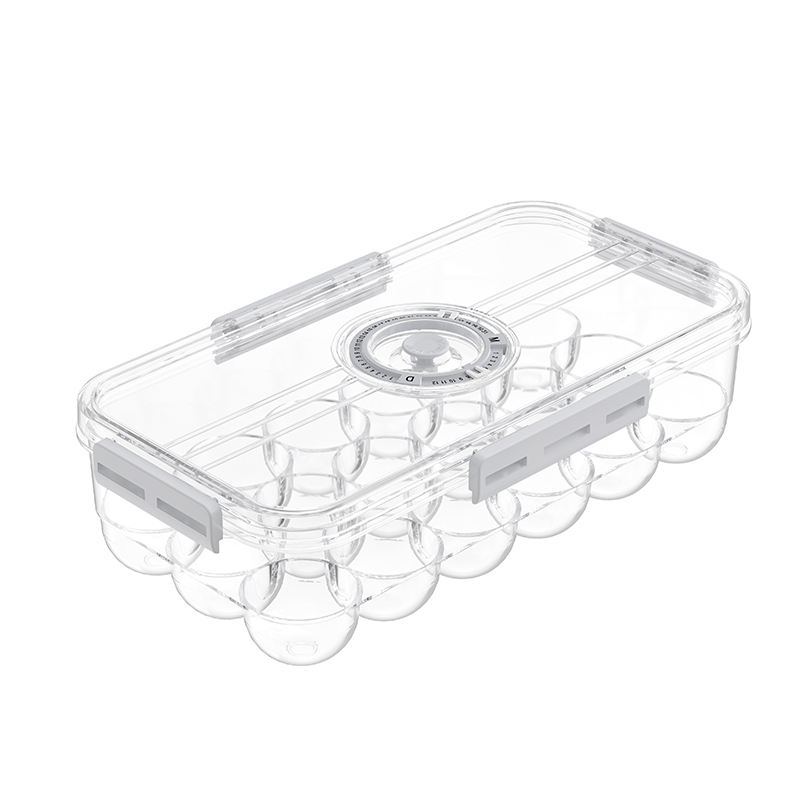
The ability of sealed fresh-keeping boxes to block moisture ingress
The humidity in the kitchen environment is heavy, and moisture entering the fresh-keeping box may cause the food to become damp, deteriorate or produce odor. The sealed fresh-keeping box uses a sealing ring and a lock system to form an almost closed environment to prevent external water vapor from penetrating. A good sealing design can effectively prevent liquid from overflowing and reduce the situation where moisture enters the box through the humidity in the air. In addition, the sealed box body material itself is mostly waterproof plastic, which further improves the overall moisture-proof ability. However, the moisture barrier effect still depends on the integrity and correct use of the sealing ring. If the sealing ring is aged or damaged, or the lock is not completely fastened, moisture may penetrate and affect the quality of food. In addition to the structural design, the storage environment of the sealed fresh-keeping box will also affect the waterproof performance. For example, if it is placed in a humid environment for a long time, the sealing ring is easy to absorb moisture, resulting in a decrease in waterproof effect.
Main factors affecting the sealing performance of kitchen sealing fresh food boxes
The sealing performance of kitchen sealing fresh food boxes is affected by many factors. First, the material and design of the sealing ring directly determine the sealing effect. High-quality silicone sealing rings should have good elasticity and durability, and can still maintain a good fit after multiple openings and closings. Secondly, the manufacturing accuracy of the box lid and the box body also plays a key role. If there are defects or deformations in the interface, the sealing will fail. Furthermore, the user's usage habits also affect the sealing performance. If the lock is not completely fastened, or the sealing ring is damaged during cleaning, the effect of preventing air and moisture from entering will be reduced. Finally, aging after long-term use is inevitable. The sealing ring and lock may harden or break due to frequent use, temperature changes or the influence of cleaning agents, thus affecting the sealing. In order to ensure a good sealing effect, it is recommended that users check the status of the sealing ring regularly and replace it as needed.
Methods for testing the sealing performance of sealed fresh-keeping boxes
There are usually several common methods to test whether the kitchen sealing fresh food boxes can effectively prevent air and moisture from entering. Physical testing methods include observing whether water leaks or bubbles emerge, such as sealing the box and immersing it in water to check whether bubbles escape; or filling the box with water and turning it upside down to observe whether there is leakage. For airtightness testing, professional instruments can be used to measure the air exchange rate in the box to evaluate the quality of the sealing performance. Sensory testing methods such as smelling and observing the preservation of food can also indirectly reflect the sealing effect. In addition, in the laboratory environment, the durability and sealing effect of the sealing ring and lock can be tested by simulating conditions of humidity or air pressure changes. In actual use, users can also judge the sealing performance of the sealed fresh-keeping box by observing the state of the food stored on a daily basis, such as whether the food is dry or whether water vapor condensation occurs. Combining multiple testing methods can help to comprehensively evaluate the protective ability of kitchen sealing fresh food boxes.
Comparison of sealing performance of common kitchen sealing fresh food boxes on the market
There are many types of kitchen sealing fresh food boxes on the market, and the sealing performance varies greatly. Products of different brands and models differ in sealing ring material, lock design and box body processing accuracy, which directly affect their ability to prevent air and moisture from entering. Some products use food-grade silicone sealing rings, combined with four-sided or multi-sided lock designs, which can better ensure sealing; while some simpler fresh-keeping boxes only use single-sided buckle covers, and the sealing effect is relatively limited. Price range and material grade are often also associated with sealing performance. The following table shows a comparison of the sealing performance of several common types of fresh-keeping boxes.
| Type of Storage Box | Seal Ring Material | Locking Mechanism | Effectiveness in Preventing Air Ingress | Effectiveness in Preventing Moisture Ingress | Suitable Usage Scenarios |
|---|---|---|---|---|---|
| Four-side Lock Sealed Box | Food-grade Silicone | Four Locks | Relatively Good | Relatively Good | Household storage, long-term preservation |
| Single-lid Plastic Box | None or Ordinary Rubber | Single Lock | Average | Average | Temporary storage, short-term preservation |
| Vacuum Storage Box | Food-grade Silicone | Vacuum Pump Seal | Relatively Good | Relatively Good | Oxygen-sensitive food items |
| Twist-lock Storage Box | Food-grade Silicone | Twist Lock | Moderate | Moderate | Daily quick storage |
The impact of correct use and maintenance on sealing performance
Correct use and maintenance are important links to ensure the sealing performance of kitchen sealing fresh food boxes. First, when using, ensure that the sealing ring is clean and intact, and the lid and lock are fully fastened to avoid poor sealing due to improper operation. Secondly, when cleaning, avoid using too strong detergents and high-temperature water to prevent the sealing ring from aging and deformation. It is recommended to wash by hand to avoid damage to the sealing material caused by high-temperature cycles in the dishwasher. In addition, when the sealing ring is aged or deformed, it should be replaced in time to maintain a good sealing effect. Avoid direct sunlight and high temperature environment during storage to reduce material fatigue and aging. Reasonable use and maintenance can extend the service life of the fresh-keeping box and maintain its ability to effectively block air and moisture.

